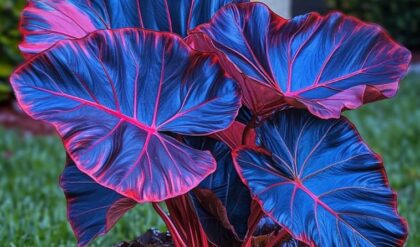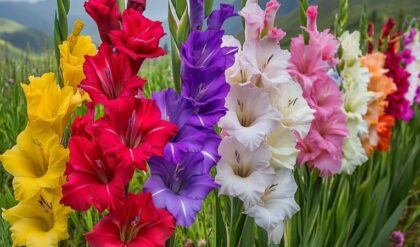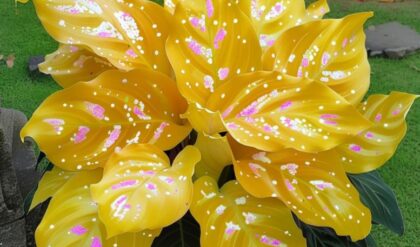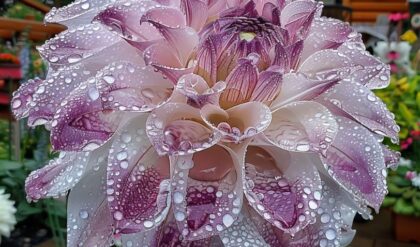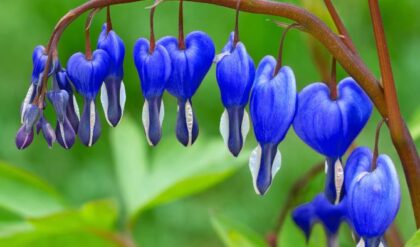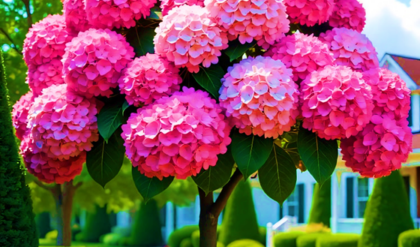Hydrangeas are truly mesmerizing plants that can transform any garden into a breathtaking spectacle. These gorgeous flowering shrubs offer a diverse array of species and hybrids, each with their unique charms and growing requirements. Mastering the art of cultivating hydrangeas is not merely about following a set of instructions; it’s a journey of forging a relationship with nature, where every bloom tells a story of care, patience, and artistic expression.
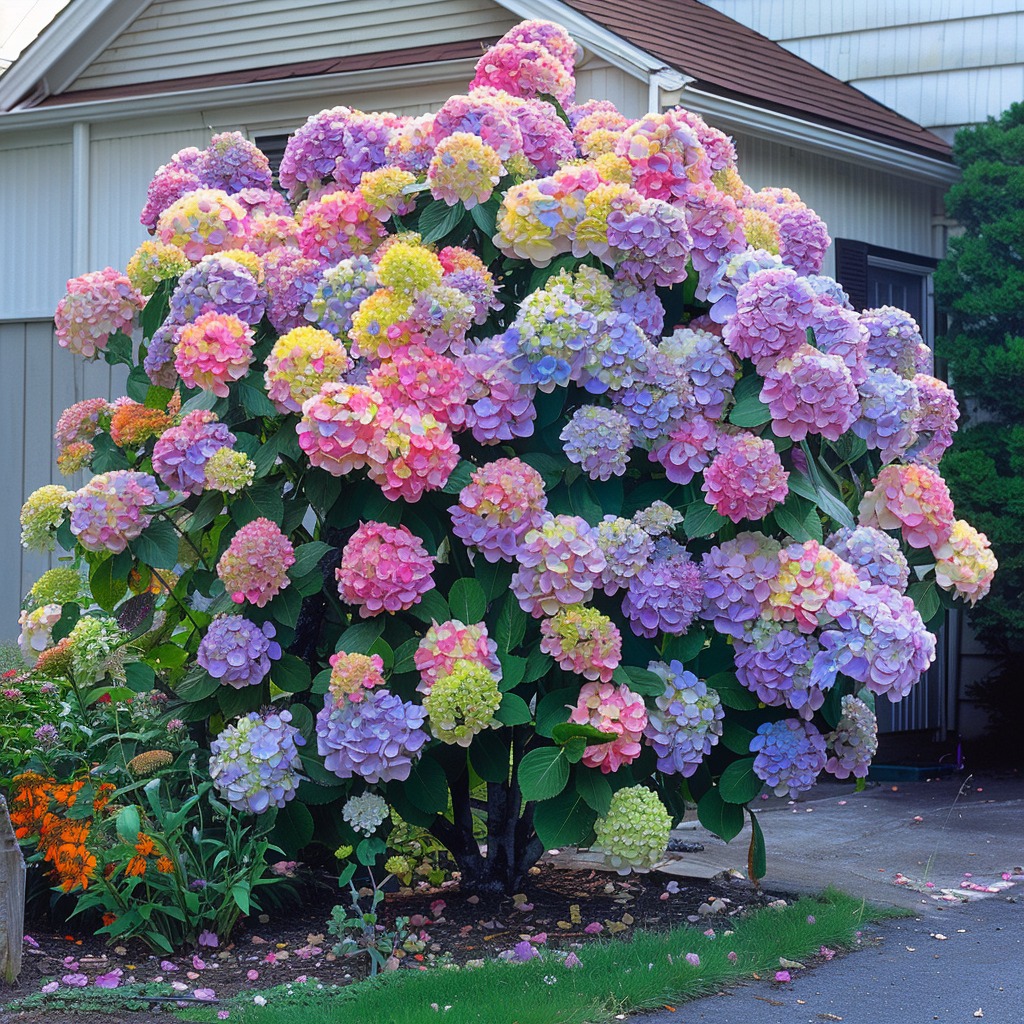
Choosing the Right Variety: Unlocking the Potential of Your Garden
Hydrangeas come in a variety of captivating forms, each with their own distinct characteristics and preferences. Understanding the nuances of these different types is the first step in creating a thriving hydrangea garden.
Hydrangea Macrophylla: The Chameleon of the Garden
Hydrangea macrophylla, commonly known as the bigleaf or mophead hydrangea, is renowned for its large, showy blooms that can range from vibrant pink to deep blue, depending on the soil’s pH level. These versatile plants thrive in partially shaded areas, making them an excellent choice for creating a lush, woodland-inspired atmosphere.
Imagine a corner of your garden transformed into a living canvas, where the hues of the hydrangeas seem to shift and dance with the changing seasons. The ability to manipulate the bloom color through soil amendments adds a touch of alchemical wonder, allowing you to tailor your garden’s palette to your personal preferences.
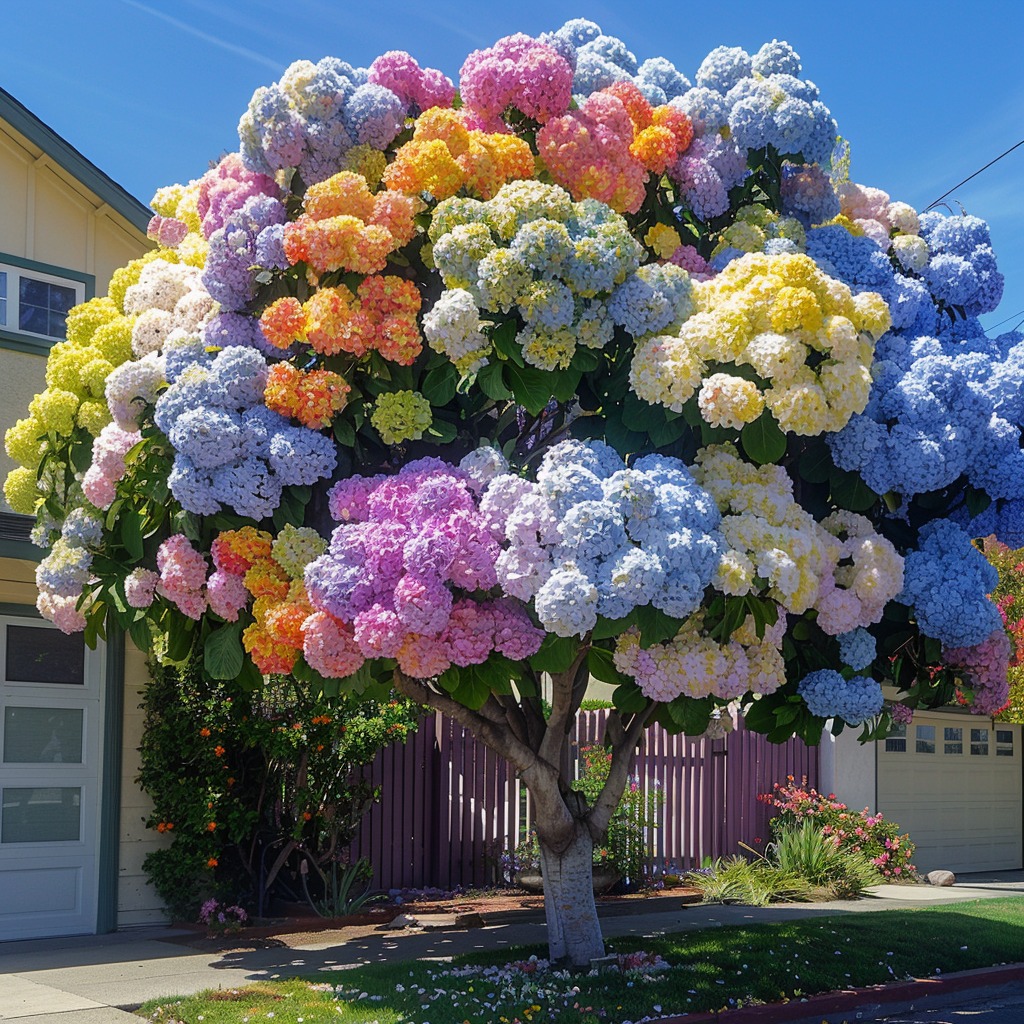
Hydrangea Paniculata: A Sculptural Delight
In contrast, Hydrangea paniculata, or the panicle hydrangea, boasts conical flower clusters that range from delicate white to a bold, rosy pink. These architectural beauties flourish in full sun, making them a captivating choice for creating focal points or lining sunny borders.
Visualize a garden path adorned with the elegant, upright stems of Hydrangea paniculata, their blooms cascading like delicate sculptures against a backdrop of lush foliage. The interplay of light and shadow on these sculptural flowers can transform your outdoor sanctuary into a living work of art.
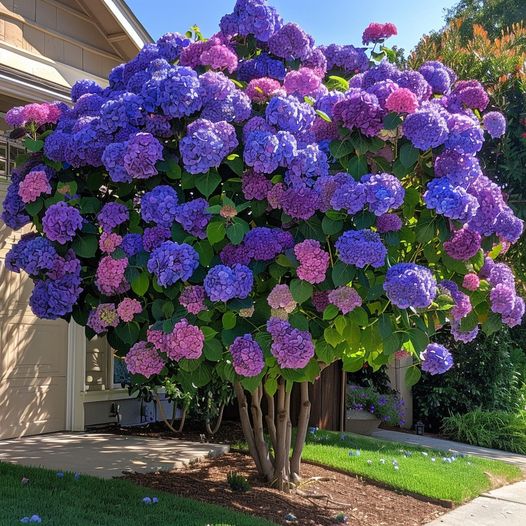
Hydrangea Arborescens: A Classic Charm
The Hydrangea arborescens, or the Annabelle hydrangea, is a beloved classic, known for its voluptuous, spherical flower heads that burst forth in a pristine white. These hardy plants thrive in partial shade, making them an excellent option for creating a sense of tranquility and serenity in shaded nooks of your garden.
Imagine a serene woodland glade, where the Annabelle hydrangeas nod gently in the breeze, their blooms evoking a timeless elegance that transports you to a bygone era. This variety’s resilience and versatility make it a cherished addition to any hydrangea collection.
By understanding the unique characteristics and preferences of these diverse hydrangea types, you can create a harmonious and visually captivating garden that reflects your personal style and the unique qualities of your outdoor space.
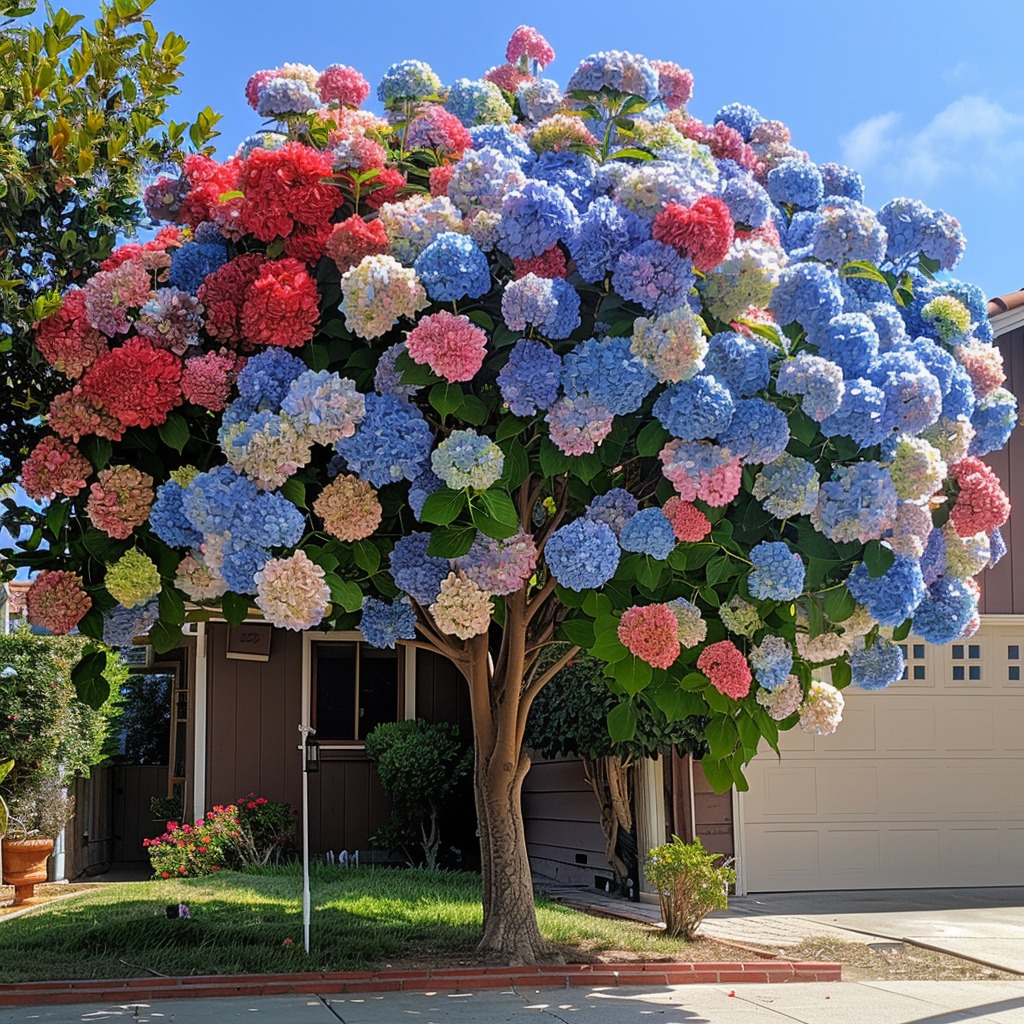
Planting for Success: Timing and Technique
Proper planting techniques are crucial for ensuring the long-term health and vibrant growth of your hydrangeas. From the ideal timing to the art of positioning, each step plays a vital role in establishing a strong foundation for these magnificent plants.
Timing is Everything
When it comes to planting hydrangeas, timing is of the essence. The optimal planting window is typically in early spring or during the fall, when the temperatures are milder, and the soil is easier to work with. This timing allows the plants to establish a robust root system before being subjected to the stresses of extreme heat or cold.
Imagine the anticipation of preparing your garden beds in the crisp, early spring air, the soil still moist from the lingering winter rains. This is the perfect moment to introduce your new hydrangea companions, giving them the best chance to thrive and flourish throughout the growing season.
Alternatively, planting in the fall can be equally rewarding, as the plants can focus their energy on root development before going dormant for the winter. This head start ensures a vigorous and vibrant display of blooms the following year, allowing you to bask in the glory of your gardening efforts.
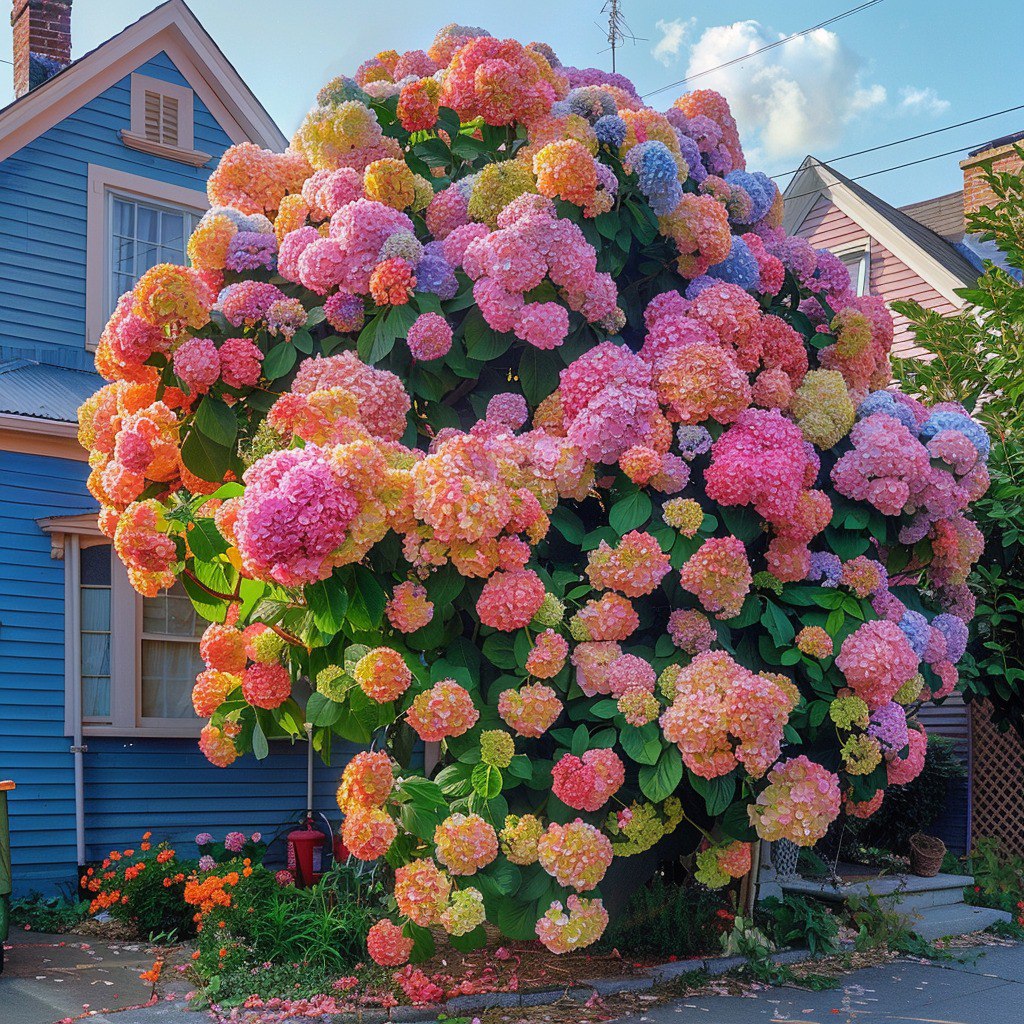
The Art of Positioning
Thoughtful placement is key when it comes to planting hydrangeas. Consider creating a welcoming environment for your new botanical friends by digging a hole that is approximately twice the size of the plant’s root ball. This extra space encourages healthy root growth and provides the plants with the necessary room to breathe and thrive.
Visualize the hydrangea’s roots gently cradled in the rich, well-drained soil, like a warm embrace welcoming them to their new home. The careful placement of each plant, taking into account their individual needs for sun exposure and soil type, sets the stage for a harmonious garden ecosystem.
Moreover, ensuring the correct planting depth is crucial. Planting the hydrangeas too deeply can lead to suffocated roots, while planting them too shallow can result in rapid drying. Finding the sweet spot, where the crown of the plant sits just slightly above the soil line, is the key to unlocking their full potential.
By meticulously planning the timing and technique of your hydrangea planting, you lay the foundation for a thriving and visually captivating garden that will delight you for years to come.
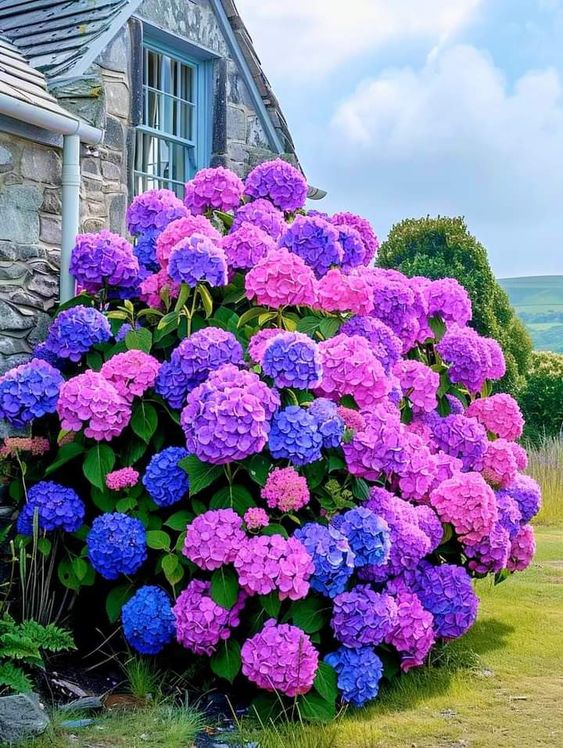
Nurturing Growth: Mastering the Art of Hydrangea Care
Once your hydrangeas are firmly rooted, the journey of nurturing their growth begins. From soil preparation to strategic watering, each step in the care process is a dance between you and the plants, a harmonious exchange that results in a breathtaking display of color and vitality.
Soil Matters: The Foundation of Healthy Growth
Hydrangeas thrive in well-drained, nutrient-rich soils that are high in organic matter. Imagine your hydrangeas as delicate guests in your garden, and you are the gracious host, providing the optimal conditions for their comfort and nourishment.
Begin by amending your soil with compost or well-rotted manure, creating a lush, fertile foundation that will support the plants’ roots. This infusion of organic matter not only improves drainage but also introduces a wealth of essential nutrients that the hydrangeas can readily absorb.
Interestingly, the pH level of the soil can also influence the color of the blooms, particularly in Hydrangea macrophylla. Acidic soils result in beautiful blue hues, while alkaline conditions yield vibrant pinks. This fascinating interplay between the earth and the plant allows you to unleash your inner artist, turning your garden into a living canvas of colors that you can curate to your liking.

The Delicate Balance of Watering
Hydrangeas are thirsty plants, and ensuring they receive the right amount of water is crucial for their well-being. Imagine your hydrangeas as delicate flowers in a vase, their petals gently opening in response to the steady, life-giving supply of water.
Establish a regular watering routine, especially during dry spells, to keep the soil consistently moist but not waterlogged. Overwatering can lead to root rot, a devastating condition that can quickly compromise the health of your plants. On the other hand, allowing the soil to dry out can result in wilting and stunted growth.
Develop a keen sense of observation, monitoring the plants’ leaves and soil moisture levels to fine-tune your watering strategy. This attentive care, like tending to the needs of a beloved pet, will be rewarded with lush, vibrant foliage and an abundance of breathtaking blooms.
Pruning for Perfection
Pruning hydrangeas might seem like a daunting task, but it is an essential aspect of maintaining their health and encouraging an even more spectacular display. Imagine your hydrangeas as living sculptures, and you are the careful artist, wielding your pruning shears to shape and refine their form.
The timing and technique of pruning vary depending on the species. For example, Hydrangea macrophylla, which bloom on old wood, should be pruned immediately after flowering, while Hydrangea paniculata, which bloom on new wood, can be pruned in late winter.
Skillful pruning not only promotes better air circulation and reduces the risk of disease but also encourages more robust growth and a more abundant flowering. It’s a delicate dance, where every cut you make shapes the final masterpiece that will grace your garden.
By mastering the art of soil preparation, strategic watering, and precision pruning, you can create an environment that nurtures the growth and flourishing of your hydrangeas, transforming your outdoor space into a harmonious symphony of color and texture.
Pest Management: Observational Gardening for a Thriving Ecosystem
Just as a healthy garden is a living, breathing ecosystem, hydrangeas can occasionally attract unwelcome pests that may threaten their well-being. However, with a mindful, observational approach, you can maintain a delicate balance and ensure the continued prosperity of your botanical companions.
Imagine your hydrangea garden as a vibrant, interconnected community, where every living organism plays a vital role in the overall harmony. By adopting an observational mindset, you can become a keen detective, identifying potential issues before they escalate and implementing natural, sustainable solutions.
Identifying and Addressing Pest Concerns
Common hydrangea pests, such as aphids or spider mites, can quickly colonize and compromise the health of your plants. By closely monitoring the leaves, stems, and blooms, you can detect the early signs of an infestation and take swift action.
Rather than reaching for harsh chemical solutions, consider incorporating natural remedies like neem oil or introducing beneficial insects, such as ladybugs, to establish a natural balance. These eco-friendly approaches not only protect your hydrangeas but also nurture the overall ecosystem, fostering a thriving, self-regulating garden.

The Art of Observational Gardening
Observational gardening is more than just a practical necessity; it’s a mindful practice that allows you to deepen your connection with the natural world. Imagine yourself as a careful observer, quietly immersed in the rhythms and cycles of your hydrangea garden, attuned to the subtle cues that reveal the plants’ well-being.
As you move through your garden, take the time to closely inspect the leaves, stems, and blooms, noting any changes or abnormalities. This attentive observation not only helps you identify potential issues but also enables you to appreciate the nuances and complexities of these living, breathing organisms.
By adopting a holistic, observational approach to pest management, you can create a thriving, self-sustaining ecosystem where your hydrangeas can flourish, unencumbered by the threats of pests and disease. This harmonious coexistence is a testament to the power of working in harmony with nature, rather than against it.
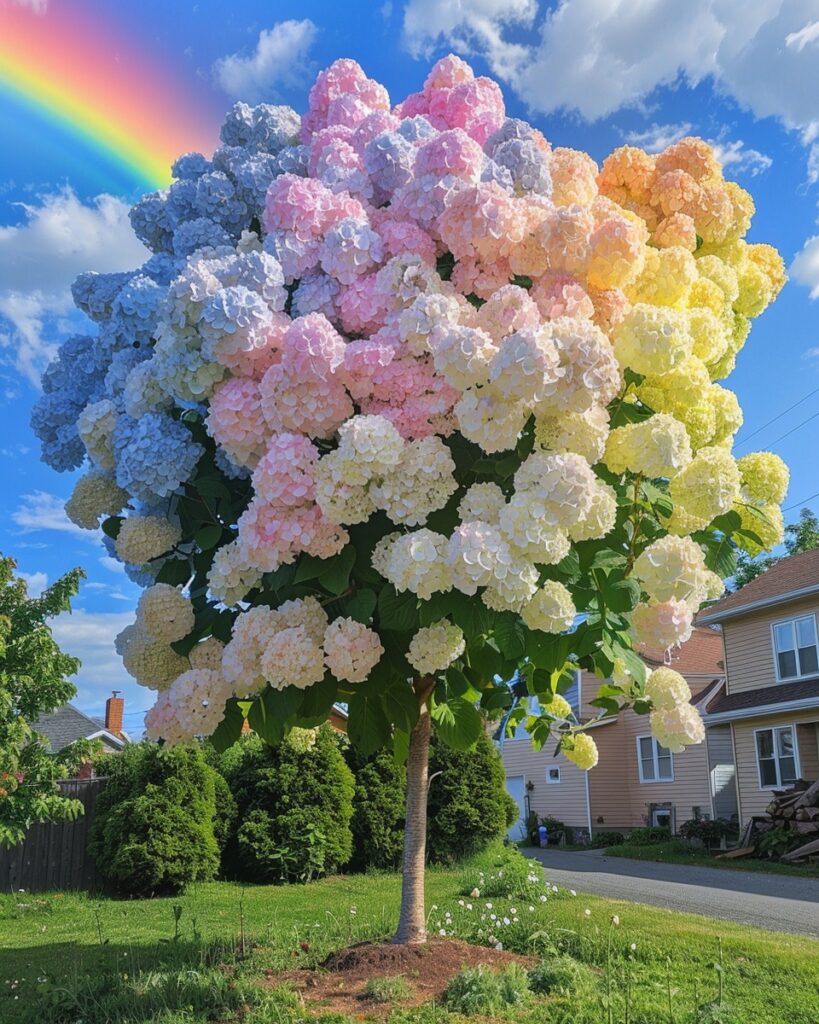
Conclusion: Cultivating a Hydrangea Garden of Artistry and Enrichment
Growing hydrangeas is not merely a horticultural endeavor; it is a journey of forging a profound connection with the natural world, where every bloom becomes a masterpiece in your living, breathing canvas. By meticulously selecting the right varieties, employing thoughtful planting techniques, nurturing their growth, and maintaining a balanced ecosystem, you can transform your outdoor space into a captivating sanctuary that delights the senses and nourishes the soul.
As you immerse yourself in the world of hydrangeas, you’ll find that the lessons learned transcend the boundaries of the garden. The patience, attention to detail, and harmonious collaboration with nature that are required to cultivate these magnificent plants can serve as a blueprint for navigating the complexities of life. Just as each hydrangea variety has its own unique needs and preferences, so too do we as individuals, and by honoring these differences, we can create a more vibrant, resilient, and fulfilling existence.
Embrace the art of growing hydrangeas as a celebration of the beauty and complexity of the natural world. Allow yourself to be captivated by the shifting hues, the sculptural forms, and the gentle sway of the blooms in the breeze. For in the act of nurturing these plants, you will find a renewed sense of wonder, a deeper appreciation for the intricate tapestry of life, and an enriching experience that transcends the boundaries of the garden.
